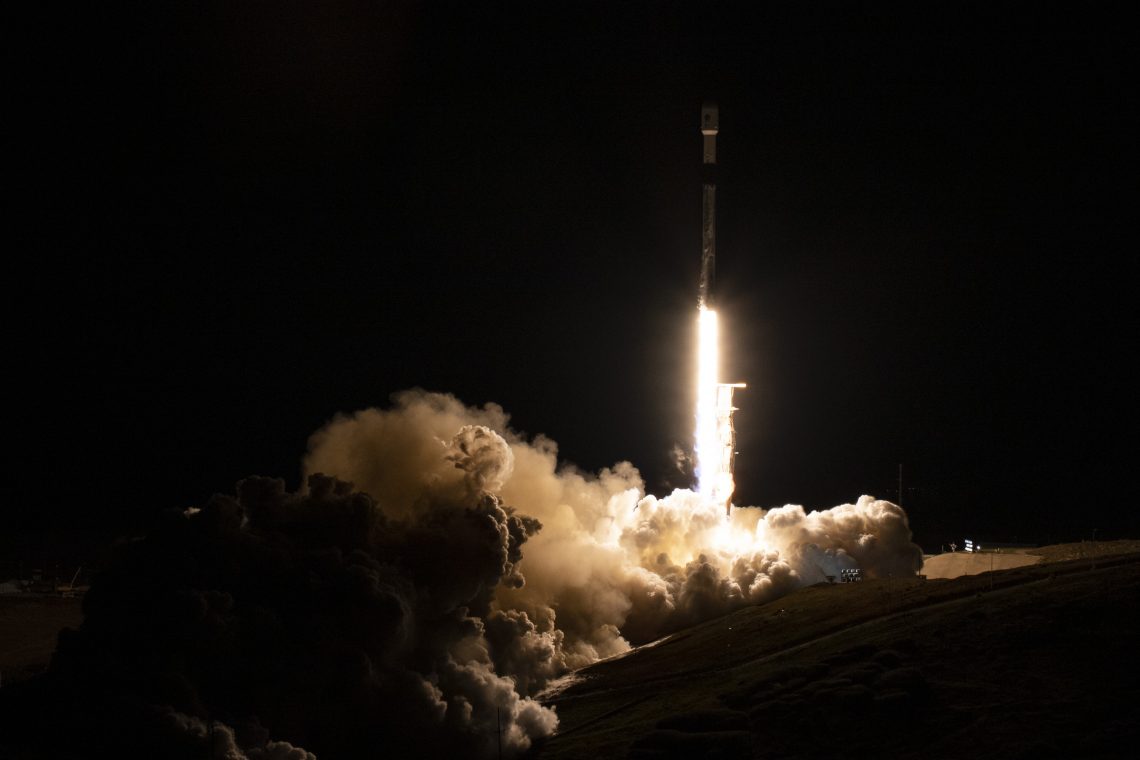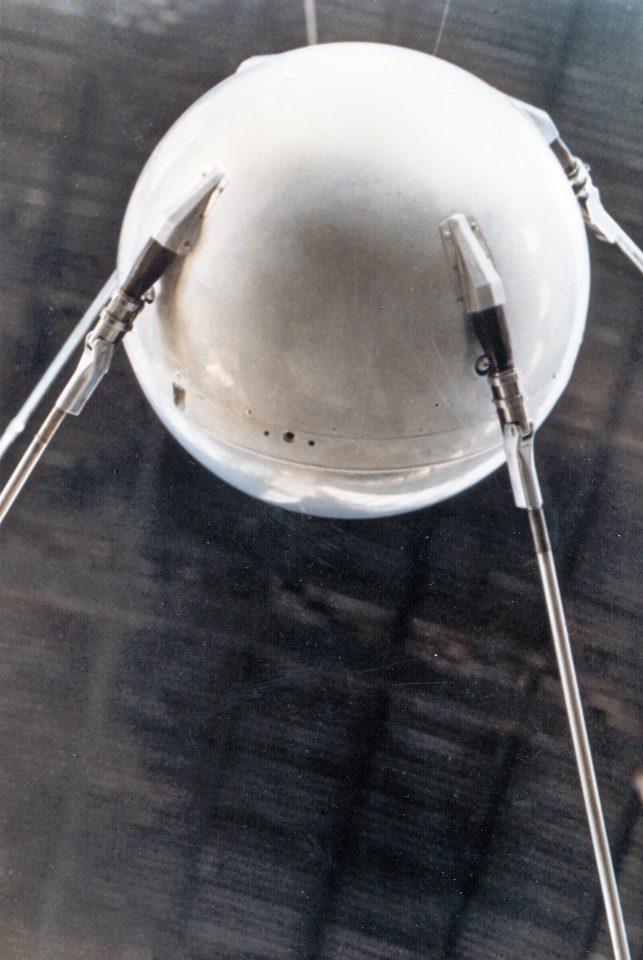Space invaders: The rise of commercial firms
Private companies are harnessing space technology that can directly influence state actors, blurring the lines between commercial and national capabilities.

In a nutshell
- Space is likely to assume ever-greater importance in the coming decades
- While military uses are still vital, new civilian ones are rapidly proliferating
- The interplay between state and private actors will shape future exploration
The space industrial complex, which used to be dominated by state-level consumers and a handful of large aerospace corporations, has now become more democratized, as a plethora of companies has entered the field. These companies have brought not only new technological innovations but also very different business approaches, such that the idea of Space 2.0 has become commonplace.
While commercial space launch companies such as SpaceX and Blue Origin have gotten much of the attention, commercial space service providers, ranging from earth-imaging companies like Planet Labs and Maxar, to satellite internet providers like Starlink, indicate that these new participants will grow their presence across the range of space services.
The products and services of these companies will challenge many traditional space providers and, more importantly, the role of nation-states in determining how space is used and by whom.
The ascendance of new space players
At the dawn of the Space Age 65 years ago, activities were mostly conducted by the superpowers in pursuit of strategic military goals. Space system development typically focused on aims that would improve their strategic security. Reconnaissance satellites, referred to as “national technical means” in various arms control agreements, provided each side with detailed information about strategic nuclear systems, conventional force deployments and other vital military information. Hardened communications satellites ensured that nuclear command and control capabilities could be sustained throughout a cataclysmic conflict.
With the end of the Cold War, however, more and more players, both commercial and national, have joined the United States and Russia. Indeed, the definition of “space power” has had to evolve. In the 20th century, a nation could be a space power only if it had the industrial and technical capacity to manufacture its own satellites and launch vehicles as well as establish a network of tracking, telemetry, and control (TT&C) facilities to manage its satellites once placed into orbit.
Few states outside the U.S. and Soviet Union had such enormous capital, technical and human resources to field such an array of assets. The People’s Republic of China (PRC), for example, only launched its first satellite in 1970 and took many years to deploy communications and other constellations.
Humanity has increasingly exploited the domain of outer space for purposes beyond purely military ones.
Since 1992, this situation has rapidly evolved. Nations can now take advantage of space by purchasing satellites from commercial vendors, rather than building them indigenously. Those satellites, in turn, may be launched by commercial space launch providers, so a nation can benefit from space-based communications, weather and earth observation capabilities without developing its own space industrial infrastructure. In this market, the U.S. was the largest exporter of spacecraft, satellites and space launch vehicles in 2020, while France is second, with Sweden and Spain also in the top five.
The PRC has taken this even further, offering “turnkey” satellite capabilities at significantly lower costs than its Western competitors. China has helped potential customers design, build and launch a satellite; train a cadre of satellite operators; build a ground control facility; and even ensure the launch. Beneficiaries have included (from 2007-2018) Algeria, Argentina, Belarus, Bolivia, Indonesia, Laos, Nigeria, Pakistan, Saudi Arabia, Sri Lanka, Thailand and Venezuela.
The expanding role of commercial space providers
Meanwhile, humanity has increasingly exploited the domain of outer space for purposes beyond purely military ones. Satellite communications work seamlessly with terrestrial systems to allow billions to keep in touch. Remote sensing data from satellites provide urban planners and farmers with useful information for planning everything from urban renewal projects to next year’s crop plantings.
Above all, position, navigation and timing (PNT) satellites such as the American Global Positioning System (GPS) and the Chinese Beidou network are now widely employed for purposes beyond navigating ships and aircraft. PNT-equipped agricultural machinery allows precise control of seed planting and irrigation. PNT networks also provide vital timing signals to support cell phone networks, pipeline pumping stations and financial transactions.
The roles of nations and corporations are likely to blur, as commercial space companies field increasingly capable systems and are able to directly influence national actors.
Perhaps the greatest role of space systems in the 21st century is as a key enabler of other activities on earth. Loss of satellite constellations, due to factors such as solar storms or other adverse space weather events, would affect various aspects of terrestrial infrastructure including energy, transportation, communications, as well as military and security affairs. Consequently, space is likely to assume ever-greater importance in the coming decades, as its influence extends further.
This growing role, however, coupled with the expanding array of users, means that the space marketplace will become increasingly competitive, with a much more diverse set of players. The roles of nations and corporations are likely to blur, as commercial space companies field increasingly capable systems and directly influence national actors. Where once only nation-states could afford high-resolution surveillance satellites, companies like Maxar and Planet Labs now can provide comparable high-resolution images at prices that even think tanks and individuals can afford.
Some of the impacts of this proliferation of capabilities can already be glimpsed. Intelsat, for example, is one of the world’s largest satellite operators, with over 50 communications satellites in orbit. Its systems not only are essential for rapid telecommunications, but they are an essential part of the American operation of its fleet of unmanned aerial vehicles (UAVs). Predators and Global Hawks depend on satellite communications, as well as GPS, to know where they are, where they are going, and whether to engage a target. Other nations may become equally reliant on satellites for their UAV operations, especially where the UAV operators are distant from the main battlefield.
Several companies now operate synthetic aperture radar (SAR) satellite systems. These satellites can see through fog and clouds (which mask terrestrial features from traditional electro-optical satellites) and can therefore monitor events even under adverse weather conditions. While such systems were once largely the purview of national space agencies, there are now at least five companies combined operating over 600 such satellites.
Similarly, Elon Musk’s decision to provide support from his Starlink satellite internet constellation has had a real military impact. Ukrainian forces have exploited the connectivity he has provided to facilitate the targeting of Russian artillery and other assets. Starlink has also allowed Iranian dissidents to get their messages out, despite heavy censorship by the Tehran regime. Consequently, both Russia and China have warned that commercial space providers like Starlink that participate in a conflict are no longer neutral noncombatants.
Russian officials have warned that Western satellites aiding Ukraine may be attacked. China, meanwhile, has reportedly already held study sessions on how to neutralize Starlink in the event of conflict.
The blurring of commercial and national space efforts is not limited to national security domains, either. A Japanese company has apparently partnered with the United Arab Emirates to undertake a lunar rover mission, which was launched in mid-December atop a SpaceX booster.

Intensified multilateral competition
The range of competitors in space is clearly growing. The Ukraine war has demonstrated the importance of space for national security purposes, but also for informing (and influencing) global public opinion. Commercial space systems operators increasingly rival national agencies in terms of the quantity and quality of space services they can provide. Less wealthy nations, by contracting with commercial systems, are now able to access information once only available to the superpowers.
The major powers, meanwhile, have also rediscovered space as a competitive domain. Both the U.S. and China have made clear that they intend to revive human lunar exploration in the next decade. Japan, India and South Korea are all pushing for the development of space capabilities. While Russia’s space program languishes due to a lack of investment, its threats to attack foreign space systems (including both national and commercial systems) make it an important factor influencing future space development.
Scenarios
In the first scenario, space companies become key strategic players. Companies can choose to work with a variety of clients, from news organizations and think tanks to individual nations. By providing access to space-based applications, from high-resolution earth imaging to SAR images to communications, data relay and the internet, commercial space companies can influence national behavior.
For example, news agencies using space-based data might reveal military preparations, discouraging a country from attacking a neighbor as it would no longer have the advantage of surprise. For the same reason, a nation able to purchase space-based information or exploit commercial satellites to move data and communicate would enjoy a significant advantage. Conversely, a nation denied access to commercial space systems would find itself operating in a disadvantaged position.
One possibility is that commercial space companies will assume a greater role, much like key transportation companies, energy companies and other providers of vital services and resources. This would especially become an issue if space companies were established outside the Western community of nations. While there is often a fair degree of confluence, cooperation and coordination among the Western nations on sanctions and embargoes, that consensus erodes outside that community. Companies established in Africa, South America, South and Southeast Asia may well not be amenable to either requests or pressure to restrict whom they deal with.
In the second scenario, the space industrial sector is fragmented and incoherent. Establishing norms and standards for the operation of space systems will become both more pressing and more difficult as the range of players expands. Particularly tempestuous may be the issue of bandwidth within the electromagnetic spectrum. Bandwidth is a finite resource. Satellite operations are, in effect, an exercise in how to exploit the available bandwidth allocated to communications, sensors, etc. Allocation of bandwidth is governed by the United National International Telecommunications Union (ITU).
Satellite operators (as well as other broadcasting and communications companies) need to coordinate with each other and the ITU in their operations. This is by no means a given. Several controversies have arisen involving interference with GPS signals. In one case, a company (LightSquared) had a terrestrial cellular communications network that would have interfered with GPS signals. The American Federal Communications Commission (FCC) eventually shut down LightSquared’s network in 2012. Later, however, it allowed a reorganized LightSquared, now called Ligado, to operate its network under restricted circumstances amid protests from the U.S. Department of Defense.
In this scenario, space companies are unable to combine and present a more unified voice. Instead, these firms engage in much more competitive, rather than coordinated, behavior. At the same time, they increasingly alienate various other industries and players (e.g., transportation companies, military bureaucracies).
In addition, a major, protracted global slump might well affect the financial health of many of these companies. While corporations like SpaceX and Blue Origin enjoy the support of major corporations, many other space service providers are far smaller. Demand for their services would likely decline in the event of a major recession, and competition among them would therefore intensify. The resulting shakeout would likely see a marked reduction in the total number of space providers across all sectors.
In the third scenario, space companies become allies of certain nations. In the West, commercial space companies often enjoy significant subsidies. In Russia and China, many space companies are state-owned enterprises or otherwise heavily integrated into the national industrial complex. Consequently, major corporations like Lockheed-Martin, Boeing and Airbus, or Chinese entities like the China Aerospace Science and Technology Corporation (CASC), can be expected to side with their national supporters. This is especially true for Chinese companies. They will obey Chinese Communist Party directives regardless of whether they are state-owned enterprises or nominally private companies.
Given the threats lodged by Russia and China, some Western commercial firms are likely to seek protection from such risks by coordinating more with Western governments. Others, however, may choose to be neutral, and not supply information to any parties to a conflict.
The key question in this scenario will be the stance of companies headquartered outside the U.S., Europe, Japan and South Korea. A version of this appears to be happening with regard to UAVs, as Turkey and Iran become important sources of UAVs to Ukraine and Russia respectively. How a Middle Eastern, South or Southeast Asian, or South American space company will behave is therefore likely to reflect their respective home governments’ positions, which in turn may well not align with those of either the West or China and Russia.







